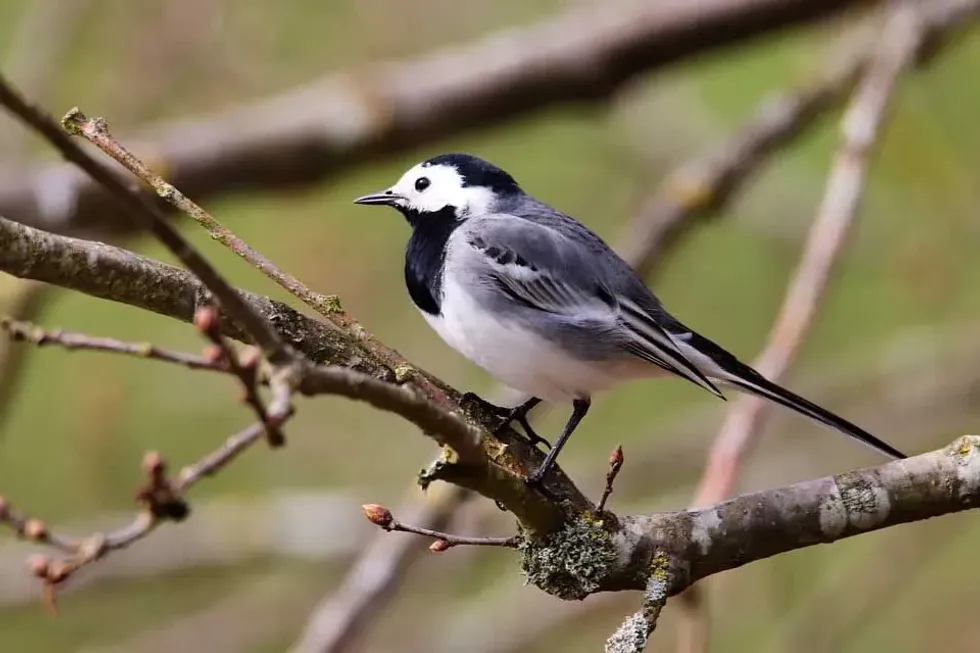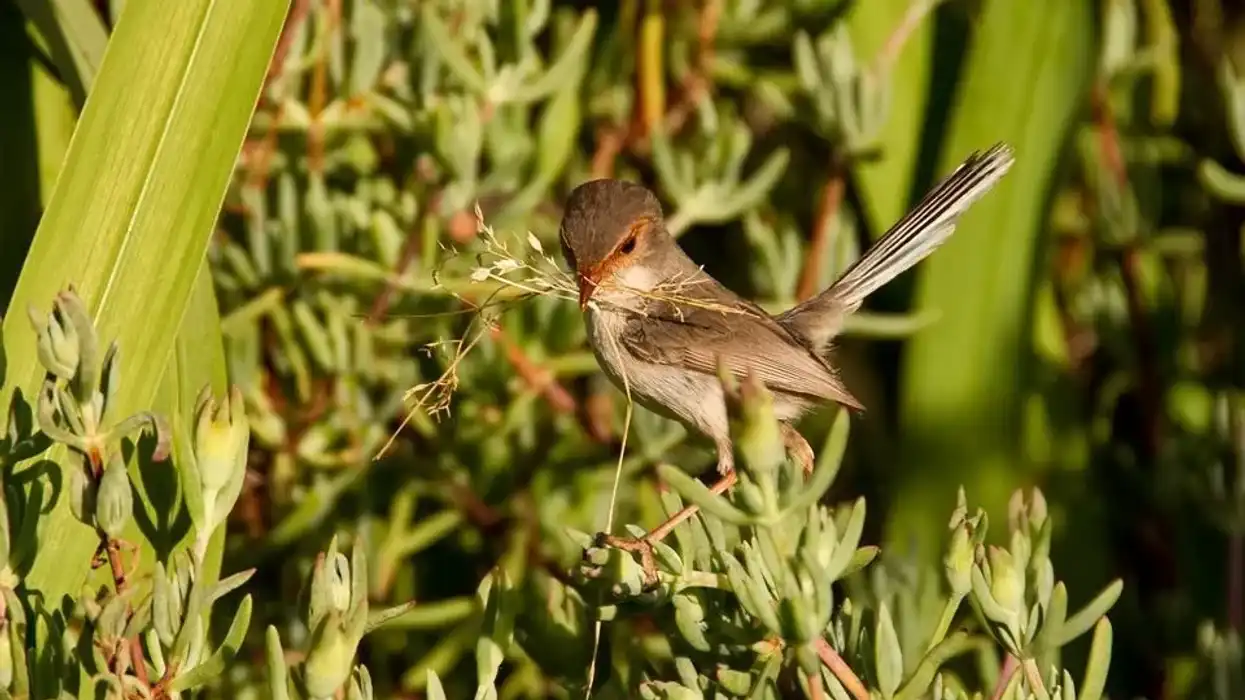The scientific name of the white wagtail is Motacilla alba, and it is a passerine bird species of North America. It consists of several subspecies that probably arise because of different geographical areas.
Some of them include Motacilla alba yarrellii, Motacilla alba lugens (white wagtail lugens or black-backed wagtail), and Motacilla alba leucopsis. All the subspecies are distinct from each other based on the wing's color of the back, head, and wings.
They also differ in some mating and nesting behavior. During mating season, some of them show sexual dimorphism.
The color in a subspecies is also different in breeding and non-breeding males and also in juveniles. Phylogenetic research suggests that some genetic traits have evolved more than once. Subspecies like M.a.
lugens (black-backed wagtail) and M.a albodies are black-blacked birds, which means they have more black backs. Although, these black-backed wagtail birds usually turn gray in winter. The white wagtail call are high-pitched 'tsit', 'chizzick', and 'tzwerp.'
If you enjoy reading this article, check out these tawny eagle facts and sparrow facts for more great animal content.
White Wagtail Interesting Facts
What type of animal is a white wagtail?
Motacilla alba, also known by its common name white wagtail, is a diminutive passerine bird of the family Motacillidae. This family is a group consisting of other passerine birds like pipits and longclaws.
What class of animal does a white wagtail belong to?
This bird species belong to the Aves class animal of the phylum Chordata.
How many white wagtails are there in the world?
The white wagtail (Motacilla alba) passerine species has an extensive population range. The total population size of this species is estimated between 135-221 million across the world.
Where does a white wagtail live?
The white wagtail is most common in western Europe and the Mediterranean. It breeds up to latitudes 75 degrees North through Eurasia, except in the Arctic regions where the isotherm in July is lower than 4 degrees Celsius.
The mating and production of offspring also occur in the mountains of Morocco and western Alaska. Northern European birds migrate to the Mediterranean and African breed, whereas the Asiatic birds travel to India, Middle East, and Southeast Asia.
Apart from this, North American white wagtail also overwinters in tropical Asia. The bird is a scarce breeder in Alaska.
There are 9-10 subspecies of white wagtail. The pied wagtail, also known as the water wagtail, is a subspecies that dominates in regions like Ireland and Great Britain.
What is a white wagtail's habitat?
It inhabits a wide variety of dry and wet habitats, including lakeshores, coastlines, tidepools, rocky shorelines, edges of reservoirs, ponds, campsites, upland rivers, and passive lowland rivers. It also lives in agricultural lands, gardens, parks, and the locality of urban towns and cities.
This bird is often seen in gardens around human settlements and villages. It is absent in the desert areas where there is scarce vegetation.
It is very easy for the wagtail to breed in high mountains that range up to 16404 ft (5000 m) in the Himalayas. They are also commonly found in Southeast Asia.
Who do white wagtails live with?
These North American birds usually live alone or in pairs. In the breeding season, they are often seen in flocks at feeding grounds or perching on trees, reedbeds, or old factories.
How long does a white wagtail live?
The lifespan or life cycle of the white wagtail bird lasts around 12 years in the wild. However, it can live for some more years in captivity.
How do they reproduce?
Motacilla alba is a monogamous bird species of North America. The breeding season ranges from April to August.
During the mating season, these birds can get very aggressive, especially towards invaders. To attract female birds, males usually sing while flying in the sky, with tails and wings raised upward.
In response, the female white wagtail bow their head and raises their tail at an angle of 45 degrees. Both males and females of this species build the nest, but males start the nest building and females finish the nesting process.
The masked wagtail (Motacilla alba personata) a subspecies of the white wagtail. The females alone build the nest for the second broods, while the males still provide the young from the first.
This nest is a rough cup made of vegetation materials like grass, twigs, rootlets, moss, and leaves. Internally, it is lined with soft materials, such as wool, bird feathers, and animal hair.
The nest site is generally a crevice or hole in the banks of rivers, streams, or ditches, but the species can also construct the nest in bridges, walls, and buildings. Interestingly, one nest of these birds was found in a walrus skull.
They build the nest in association with other creatures. For instance, they construct the nest in the beaver's dams and nests of golden eagles.
The clutch size ranges from 3-8 eggs, but 4-6 eggs are common. It can produce 2-3 clutches per year.
The color of the eggs is cream with a light blue-green tint and red-brown spots on the entire surface. The measurement is 0.83 in x 0.59 in (21mm x 15 mm). Both parents perform incubation duties, though female incubates for a much longer time.
The hatching period is between 12-16 days. Both parents also do feeding of chicks. The chicks fledge from the nest after 12-15 days, but they are still fed for another week by their parents.
The common cuckoo places its eggs in the nest of the wagtail. After this, the latter deserts its nest because it is too tiny to push the obtruding egg out of its nest and also possesses a short bill that is too small to demolish the cuckoo's egg by puncturing it.
What is their conservation status?
The white wagtail species has a broad range of 10 million km square (3.8 million sq. m), with enough individuals.
The population size ranges from 130-230 million. The population trend is unknown, but with this wide population size. It is not assumed to reach the threshold for the population decrease criteria of the IUCN (International Union for Conservation of Nature) Red list, that is, dropping over 30 % in ten years or three generations.
The majority resides in Europe, with a population of 6.9-27.6 million pairs or 33.9-55.2 million individual adults. Therefore, this bird species of North America is decided to be of Least Concern.
The European population is constant. The members of this species have adapted well to both environmental and human changes. They make their home in the human settlement areas without any hesitation.
Many big flocks of these birds perch in water in Dublin. Sometimes, people catch them for sport, put them in their collection, keep them as pets, or eat as food.
White Wagtail Fun Facts
What do white wagtails look like?
White wagtails are slender aquatic birds with a tail-wagging constantly all the time. The breeding adult male has a black and white head, but only white cheeks, belly, head sides, and ear-coverts. Chin, throat, breast, nape, bill, legs, feet, and the hind neck are black as the head.
However, the upper parts are gray, and the upper wings feature a white, gray, and black pattern. The black tail has a white margin.
The length of the tail and wings are almost the same. Female looks similar but duller than male. In the non-breeding individuals, the crown and nape are olive-gray.
How cute are they?
The black and white wagtails look adorable. That is why some people keep these birds as pets.
How do they communicate?
White wagtails communicate through displays and vocalizations. During threat displays, the black breast is exposed towards the intruder with puffed-up plumage and raised tail. They can run after bigger birds, including Dippers and various shorebirds. These birds emit squeaky 'tslee-wee' or 'tslee-vit' sounds.
How big is a white wagtail?
Motacilla alba, also known by its common name white wagtail, has a length between 6.5-7.5 in (16.5-19 cm), which is seven times bigger than an oriental cockroach.
How fast can a white wagtail fly?
The flying speed is 24.8 mph (40 kph).
How much does a white wagtail weigh?
The weight of a Motacilla alba is 0.88 oz (25 g).
What are their male and female names of the species?
The male and female of this bird species are not given a separate name.
What would you call a baby white wagtail?
The baby is generally called a chick.
What do they eat?
The diet of the white wagtail birds includes a wide variety of insects and other vertebrates. Some of them include crustaceans, spiders, worms, beetles, and flies.
Are they dangerous?
No, white wagtails are non-dangerous birds. They are helpful to humans, as they can eat various agricultural pests that can harm crops.
Would they make a good pet?
White wagtails are beautiful, small, and cute birds. People love to keep them as pets.
Did you know...
The Motacilla alba has been featured on stamps of various nations, including the United Kingdom, Iran, Ireland, Latvia, Norway, Hong Kong, Georgia, Belarus, and Poland. It is also the national bird of the country Latvia. Its name has been used in the cultural or folk songs of this country.
What is the difference between a pied wagtail and a white wagtail?
The pied wagtail is darker than a white wagtail. The former has black color on the throat that continues on the side of the neck.
What are threats to the white wagtail?
White wagtail threats include climate change and hunting.
Here at Kidadl, we have carefully created lots of interesting family-friendly animal facts for everyone to discover! For more relatable content, check out these hornbill facts and chickadee facts pages.
You can even occupy yourself at home by drawing one on our White Wagtail coloring pages.










